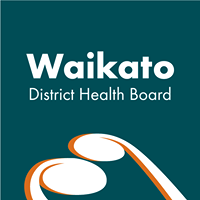Acting early is a key to reducing pressure injuries
Today is World Wide Stop Pressure Injury Day, and Waikato DHB is marking it with information for staff and public and an update on the DHB’s own project to reduce pressure injuries in hospital.
Sometimes called pressure ulcers or bed sores, pressure injuries are caused by persistent pressure on a localised area of skin. The pressure obstructs blood flow to the skin and the skin dies, and the area below it can become infected.
Pressure injuries are often on a person's bottom, heels, elbow or base of the spine, but there are many other 'danger spots' as well. People confined to bed are particularly prone to them, because they are less able to move themselves to relieve pressure.
“The key is to identify the danger before it starts or to catch it as early as possible,” says Quality and Patient Safety assistant group manager Mo Neville.
“Our focus is on prevention and management. That includes making members of the public more aware of situations where they or a family member might be at risk of a pressure injury.
“We have some
straightforward advice on our website that uses the word
SKINS to remind people of the things to look out for.
S
– Surface: Make sure you are on a supportive surface
K
– Keep moving: Change your position often
I –
Incontinence: Keep dry and clean
N – Nutrition: Eat
healthily and drink frequently
S – Skin Inspection:
Check for discolouration and soreness
Hospital staff must also be ultra-alert about pressure injuries, because many patients have restricted movement and medical conditions that make healing more difficult. In some cases, equipment used to treat patients can become a source of pressure, if not properly managed.
Waikato DHB began a pilot project in April last year on three Waikato Hospital wards that have patients at higher risk of developing pressure injuries because of their medical condition or age. The project focused on staff education, and a recent six-month evaluation indicated higher staff awareness and reporting of pressure injuries and no stage 3 or 4 (more advanced level) hospital acquired pressure injuries.
While the results are encouraging, Ms Neville says it will take a rollout of the project across the organisation next year to really see how the DHB is progressing. “When we have very small patient numbers, the results can fluctuate. Larger numbers will give us better tracking of our progress.”
Feedback from staff on the pilot project wards is very
positive. Karen Nixey, a nurse educator on Ward M14 says the
project has “focused nurses’ attention on a really
important area of patient care.” Raewyn Lee, charge nurse
manager of Ward OPR4 says “the Pressure injury pilot
project is a great quality initiative that guides nurses’
practice in preventing and managing pressure
injuries.”
ENDS



 PHARMAC: Pharmac Consulting On Widening Access To Venetoclax, Azacitidine And Upadacitinib
PHARMAC: Pharmac Consulting On Widening Access To Venetoclax, Azacitidine And Upadacitinib Pharmaceutical Society of NZ: Launch Of PSNZ Position Statement And Priority Areas Of Focus
Pharmaceutical Society of NZ: Launch Of PSNZ Position Statement And Priority Areas Of Focus Jack Yan: A Farewell To Arms Re-released, In The Form Ernest Hemingway Intended
Jack Yan: A Farewell To Arms Re-released, In The Form Ernest Hemingway Intended Baycourt Community and Arts Centre: Talofa Papa - A Celebration Of Laughter, Love And Family
Baycourt Community and Arts Centre: Talofa Papa - A Celebration Of Laughter, Love And Family Bikesport NZ: 2025 Honda New Zealand Motocross Grand Prix At Woodville - Greatest Show On Turf A Memorial Event
Bikesport NZ: 2025 Honda New Zealand Motocross Grand Prix At Woodville - Greatest Show On Turf A Memorial Event Crohn's and Colitis NZ: Camp Purple Live 2025 - Celebrating A Decade Of Fun And Friendship For Kids And Teens With Inflammatory Bowel Disease
Crohn's and Colitis NZ: Camp Purple Live 2025 - Celebrating A Decade Of Fun And Friendship For Kids And Teens With Inflammatory Bowel Disease